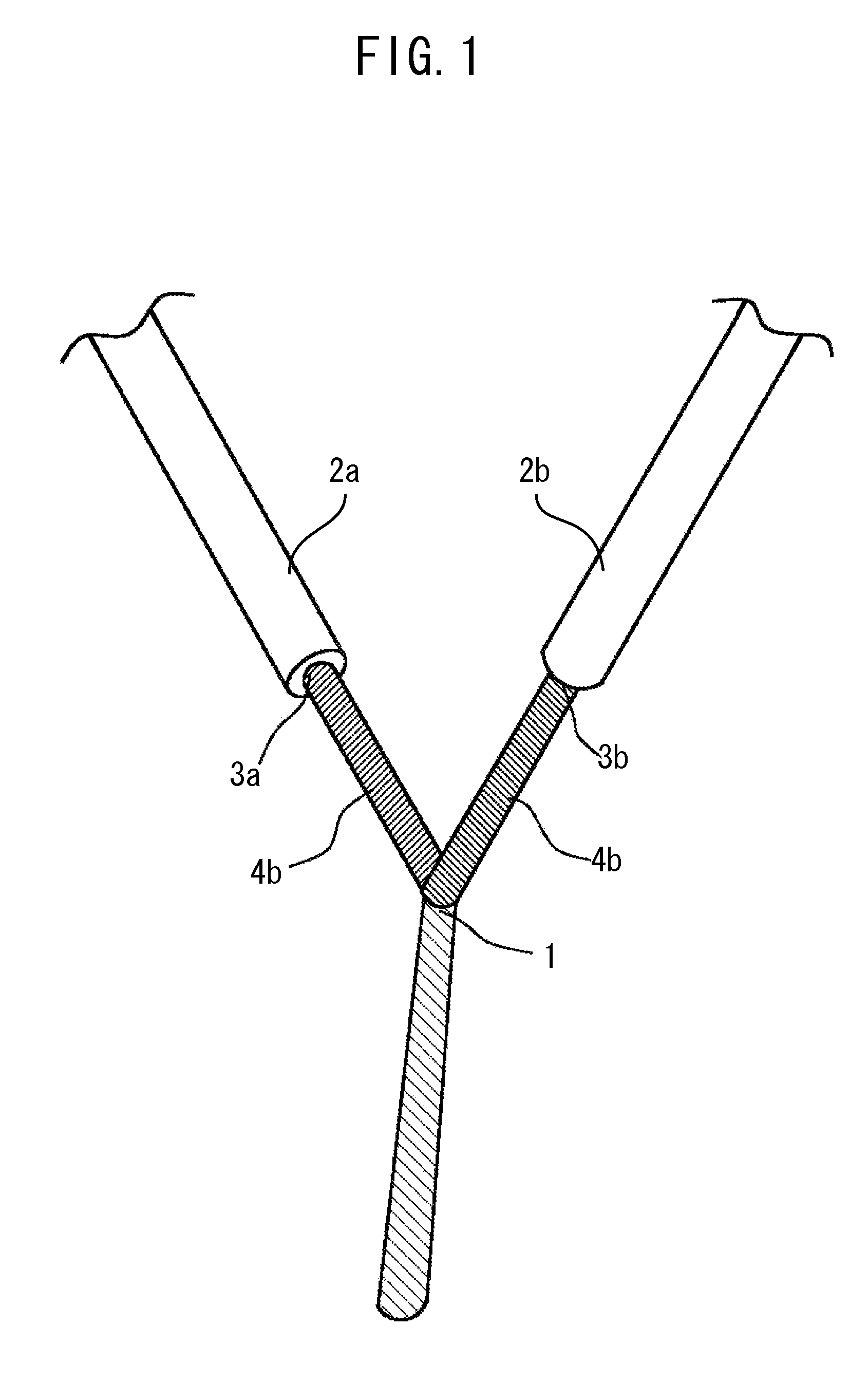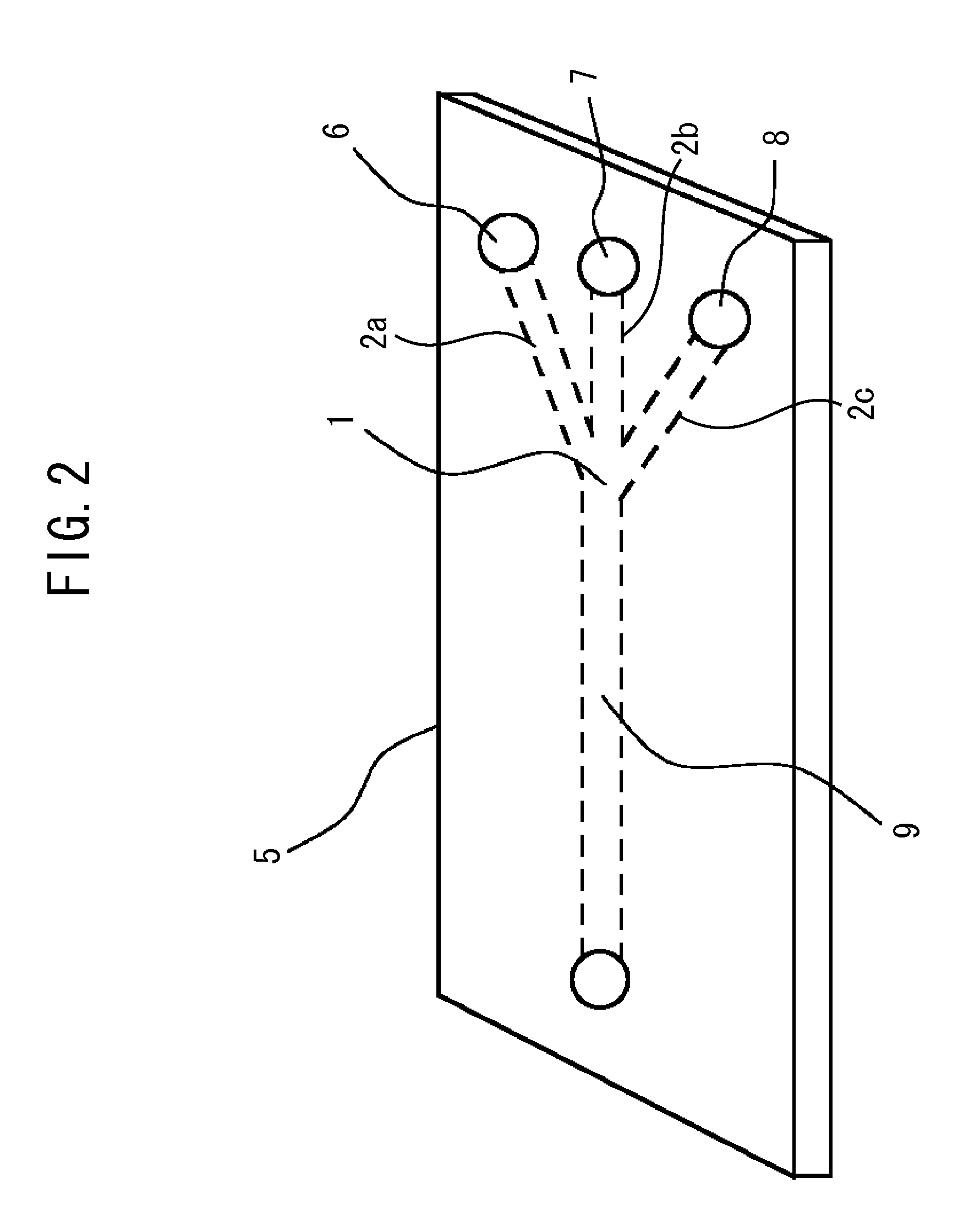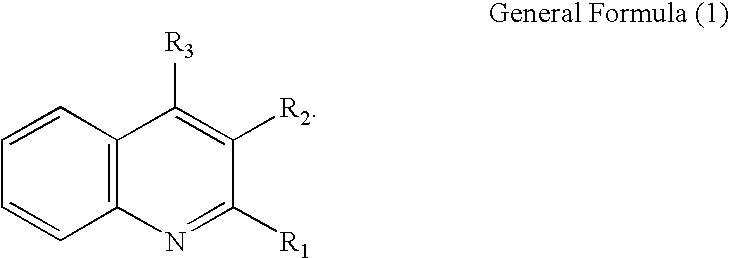Method for manufacturing dispersion of quinoline derivative
a technology of quinoline and dispersion, which is applied in the field of manufacturing a dispersion of quinoline derivative, can solve the problems of clogging of the ink jet head, affecting the color reproduction and the color reproduction ability of pigment ink images is generally inferior to that obtained with dye inks, so as to reduce the manufacturing cost and expand the number of dispersants. , the effect of small particle siz
- Summary
- Abstract
- Description
- Claims
- Application Information
AI Technical Summary
Benefits of technology
Problems solved by technology
Method used
Image
Examples
example 1
[0079]The present example was implemented by a synthesis route, such as shown by reaction scheme (1) below.
[0080]In the present example, 2,5-di-(p-toluidino)-terephthalic acid was used as an N-arylanthranilic acid derivative. A total of 10 parts of 2,5-di(p-toluidino)-terephthalic acid was placed into an eggplant-shaped 100 mL flask, 30 parts of methanesulfonic acid was added thereto at normal temperature and a solution was prepared.
[0081]The eggplant-shaped flask was immersed in an oil bath heated to a temperature of 160° C., and stirring under heating was performed for 10 minutes under an argon gas atmosphere. The solution changed color from yellow to deep blue-purple, the formation of 2,9-dimethylquinacridone, which is a quinoline derivative, by a condensation ring-closing reaction was confirmed, and the product was taken as a reaction liquid. The reaction liquid was cooled to normal temperature, 15 parts of sodium dodecylsulfate was added as a dispersant, and stirring was perfor...
example 2
[0088]The present example was implemented by a synthesis route, such as shown by reaction scheme (2) below.
[0089]In the present example, 2,5-dianilinoterephthalic acid was used as an N-arylanthranilic acid derivative. A total of 10 parts of 2,5-dianilinoterephthalic acid was placed into an eggplant-shaped 100 mL flask, 40 parts of dodecylbenzenesulfonic acid was added thereto at normal temperature, and a solution was prepared.
[0090]The eggplant-shaped flask was immersed in an oil bath heated to a temperature of 160° C., and stirring under heating was performed for 10 min under an argon gas atmosphere. The solution changed color from yellow to deep blue-purple, the formation of dimethylquinacridone, which is a quinoline derivative, by a condensation ring-closing reaction was confirmed, and the product was taken as a reaction liquid.
[0091]A microreactor 5 with a microscale-sized micro-channel 9 capable of mixing three liquids, such as shown in FIG. 2, was used as a mixing field 1. The...
example 3
[0092]The present example was implemented by a synthesis route, such as shown by reaction scheme (3) below.
[0093]In the present example, a methyl ester of 2,5-di-(p-toluidino)-terephthalic acid was used as an N-arylanthranilic acid derivative. A total of 10 parts of this compound was placed into an eggplant-shaped 100 mL flask, 10 parts of p-toluenesulfonic acid was added thereto at normal temperature, the components were heated to 110° C., and a solution was prepared. The eggplant-shaped flask was immersed in an oil bath heated to a temperature of 180° C., and stirring under heating was performed for 10 minutes under an argon gas atmosphere.
[0094]The solution changed color from yellow to deep blue-purple, the formation of 2,9-dimethylquinacridone, which is a quinoline derivative, by a condensation ring-closing reaction was confirmed, and the product was taken as a reaction liquid. The reaction liquid was cooled to 110° C., 15 parts of sodium dodecylsulfate was added as a dispersant...
PUM
| Property | Measurement | Unit |
|---|---|---|
| temperature | aaaaa | aaaaa |
| temperature | aaaaa | aaaaa |
| size | aaaaa | aaaaa |
Abstract
Description
Claims
Application Information
 Login to View More
Login to View More - R&D
- Intellectual Property
- Life Sciences
- Materials
- Tech Scout
- Unparalleled Data Quality
- Higher Quality Content
- 60% Fewer Hallucinations
Browse by: Latest US Patents, China's latest patents, Technical Efficacy Thesaurus, Application Domain, Technology Topic, Popular Technical Reports.
© 2025 PatSnap. All rights reserved.Legal|Privacy policy|Modern Slavery Act Transparency Statement|Sitemap|About US| Contact US: help@patsnap.com



